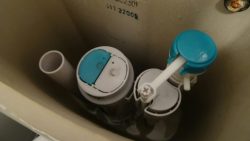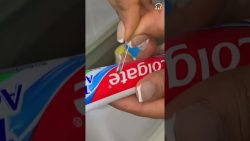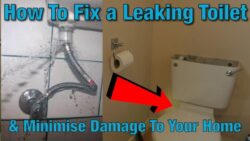Bathroom Sink Leaking
If you’ve ever tried to sleep with the sound of a dripping faucet in the background, you know just how maddening it can be. The constant drip drip drip can drive even the most patient person to their breaking point. But fear not, fixing a leaking bathroom sink is a common and relatively simple DIY task that can save you money and your sanity. As the saying goes, ‘a stitch in time saves nine,’ and the same is true for leaky faucets. Ignoring the problem can lead to bigger issues down the road, like water damage and higher utility bills.
So, put on your DIY hat, grab your tools, and let’s get to work on fixing that pesky leak.
Identify the Source of the Leak
You’re probably frustrated by the constant sound of water, but identifying the source of the leak is crucial to getting your bathroom back in working order. Common causes of bathroom sink leaks include worn-out washers, corroded pipes, and loose connections beneath the sink. Take a closer look at the sink and see if you can identify any visible signs of wear and tear.
DIY solutions are available for some common bathroom sink leaks. For example, if the issue is a worn-out washer, you can replace it yourself with a few basic tools. However, if the leak is caused by corroded pipes or loose connections, you may need to call a plumber.
It’s important to consider the cost of hiring a professional before attempting a DIY solution, as it may actually end up costing you more in the long run if the problem is not fixed properly.
When to call a plumber ultimately depends on the severity of the leak and your level of comfort with DIY repairs. If the leak is significant and you’re not confident in your abilities to fix it yourself, it’s best to call a plumber. Keep in mind that while hiring a professional may come with a higher cost, it can also provide peace of mind knowing the problem will be fixed correctly.
Gather the Necessary Tools
Gather the necessary tools to fix your leaking bathroom sink. You’ll need a wrench to remove the nuts and bolts that hold the sink in place. A screwdriver will also be necessary to remove the screws that secure the faucet handle and other parts. Finally, be sure to have replacement parts on hand, such as washers, gaskets, or O-rings, in case they need to be replaced during the repair process.
Wrenches
Grab your trusty wrench and tighten those pipes until they’re snug as a bug in a rug. When it comes to fixing a leaking bathroom sink, wrenches are an essential tool. However, it’s important to choose the right wrench size to avoid damaging the pipes or fittings.
Here are some things to keep in mind when using wrenches to fix a leaking bathroom sink:
- Choose the right size wrench: Using the wrong size wrench can strip the bolts or damage the pipes, making the problem worse. Make sure you have a set of adjustable wrenches or a wrench set with various sizes to choose from.
- Use proper wrench technique: When tightening or loosening bolts, use slow and steady pressure. Avoid using excessive force, as it can damage the pipes or fittings. It’s also important to position the wrench properly, making sure it’s snugly fitted onto the bolt before turning.
- Don’t overtighten: While it’s important to ensure the bolts are snug, overtightening can cause more harm than good. Over-tightening can cause the fittings to crack or break, resulting in a more significant leak.
- Check for leaks: Once you’ve tightened the bolts, turn on the water and check for leaks. If the problem persists, you may need to take further action, such as replacing the washers or calling a plumber.
By following these tips, you can ensure proper use of wrenches when fixing a leaking bathroom sink. Remember to take your time, choose the right size wrench, use the proper technique, and check for leaks to ensure a successful repair.
Screwdrivers
Get ready to twist and turn with your trusty screwdriver, as we delve into the world of tightening screws and securing loose parts. When it comes to fixing a leaking bathroom sink, screwdrivers are essential tools that you can’t do without. There are different types of screwdrivers available in the market, and choosing the right one depends on the type of screw you are dealing with.
The most common types of screwdrivers are Phillips and flathead screwdrivers. Phillips screwdrivers are designed to work with screws that have a cross-shaped indentation on their head, while flathead screwdrivers are used for screws with a single slot. To choose the right screwdriver size, you need to match it with the size of the screw head. The size of the screwdriver is usually indicated on the handle or the shaft of the tool. It’s essential to use the right size screwdriver to avoid damaging the screw head and making it difficult to remove later.
If you’re unsure of the size of the screw head, you can use a screw gauge to measure it. Once you have the right screwdriver, you can start tightening loose screws or replacing damaged ones to fix your bathroom sink and stop that annoying drip.
Replacement Parts
As you look to repair your sink, one of the things you may need to consider is where to buy replacement parts. One option is to purchase them from a hardware store or home improvement store. These stores typically carry a variety of sink replacement parts, such as faucet handles, washers, and cartridges. However, it’s important to make sure that you’re purchasing the correct replacement parts for your specific sink model. If you’re unsure, it may be helpful to bring in the old parts to compare them with the new ones.
Another option is to purchase replacement parts online. There are many websites that specialize in plumbing parts and accessories, and they often have a wider selection than brick-and-mortar stores. However, it’s important to make sure that you’re purchasing from a reputable seller and that the parts you’re buying are compatible with your sink. If you’re not confident in your ability to choose the correct parts, it may be best to consult a professional plumber. Ultimately, the decision to buy replacement parts yourself or hire a professional depends on your comfort level with DIY repairs and the complexity of the repair.
Disassemble the Faucet
Before you can start taking apart the faucet, you’ll need to turn off the water supply to the sink. Look underneath the sink for the water shut-off valve and turn it clockwise until it stops. If you can’t find the valve, turn off the main water supply to your house. This will prevent water from spilling out of the pipes and causing a mess while you’re working on the faucet. Now that the water is turned off, you can start disassembling the faucet. First, remove the handle by unscrewing the set screw at the base of the handle with a screwdriver.
Next, use pliers to remove the retaining nut that holds the stem in place. Once the nut is removed, you can pull the stem out of the faucet body. Check the stem for any signs of wear or damage, such as cracks or corrosion. Common causes of a leaky faucet include worn-out washers, O-rings, or damaged valves. If you’re not comfortable disassembling the faucet yourself, consider hiring professional services to do the job. A licensed plumber can diagnose the cause of the leak and replace any damaged parts. They can also provide advice on how to prevent future leaks and maintain your plumbing system.
Remember, it’s always better to seek professional help if you’re unsure about how to fix a leaky faucet. A leaky bathroom sink can be frustrating and wasteful, not to mention costly if it leads to water damage. By following these steps to disassemble the faucet, you can identify the cause of the leak and take steps to fix it. Don’t hesitate to seek professional services if you’re unsure about how to proceed. With a little patience and know-how, you can get your bathroom sink back to its leak-free state.
Tighten Loose Connections
You can easily prevent annoying water leaks by simply tightening any loose connections in your faucet. Loose connections are one of the most common causes of dripping faucets. They can be caused by wear and tear, overuse, or even changes in temperature. Prevention tips include regular maintenance and inspection of your faucet, tightening loose connections as soon as you notice them, and avoiding using excessive force when turning the faucet handle.
To tighten loose connections, start by turning off the water supply to your sink. Then, use an adjustable wrench to tighten the nuts and bolts that hold the faucet assembly together. Be careful not to overtighten, as this can cause damage to the faucet and make the leak worse. If you’re unsure how to do this, consult the manufacturer’s instructions or call a professional plumber.
If tightening the connections doesn’t solve the problem, there may be other issues with your faucet that require more extensive repairs. In this case, it’s best to call a licensed plumber to assess the situation and provide a solution. By taking care of your faucet and addressing any issues promptly, you can avoid costly repairs and keep your bathroom sink leak-free.
Pros
- Easy to do
- Saves money
- Prevents further damage
- Can be done without a plumber
Cons
- May not fix all leak issues
- Requires technical knowledge
- May cause damage if overtightened
- May require special tools
Reassemble the Faucet and Test for Leaks
Now that you’ve tightened any loose connections, it’s time to reassemble the faucet and test for leaks. Before beginning reassembly, make sure the aerator is cleaned and free from debris. This will ensure water flows freely and doesn’t cause any further issues. Start by reattaching the faucet handle and tightening it securely with a screwdriver. Then, place the decorative cap back on the handle and secure it in place.
Next, attach the water supply lines and tighten them with a wrench. Be sure not to overtighten as it may cause damage to the connections. Once everything is reassembled, turn on the water supply and check for any leaks. If you notice any water dripping, tighten the connections again until it stops. If there are no leaks, turn off the water supply and let the faucet run for a few minutes to ensure it’s working properly. By following these steps, you’ve successfully fixed the leaking bathroom sink and prevented any further damage.
FAQs
How much does it typically cost to hire a professional plumber to fix a leaking bathroom sink?
Hiring a professional plumber to fix a leaking bathroom sink can be costly, but it depends on the extent of the repair needed. The plumber costs may vary based on the location, the complexity of the repair, and the time taken to complete the task.
Generally, the repair expenses for a leaking bathroom sink range from $150 to $450, with an average cost of $300. However, if the issue is severe, such as a broken pipe or a damaged faucet, the costs may rise significantly. It’s always recommended to get a quote from a licensed plumber and compare prices from different providers to ensure you get the best deal.
Can a leaking bathroom sink cause any other problems in my home?
A leaking bathroom sink can cause significant water damage and mold growth in your home if left untreated. This can weaken the structure of your home, leading to costly repairs. Additionally, mold growth can pose health risks to you and your family.
If you notice any signs of a leaking bathroom sink, such as water stains or dripping sounds, it’s crucial to address the issue promptly to avoid any further damage. Contacting a professional plumber to fix the leak is the best course of action to prevent any potential problems from arising. So, don’t ignore a leaking bathroom sink! Take care of it as soon as possible to avoid bigger issues down the road.
How long does it usually take to fix a leaking bathroom sink?
Common causes of a leaking bathroom sink include a worn-out washer, corroded valve seat, loose nuts, or a damaged pipe. Troubleshooting the issue may involve turning off the water supply, removing the faucet handle, and inspecting the damaged parts.
DIY methods like replacing the washer or tightening the nuts may fix the problem, but if the issue persists, it’s best to seek professional help. Depending on the complexity of the repair, fixing a leaking bathroom sink may take anywhere from a few minutes to a few hours. It’s important to note that attempting to fix a leaking sink without proper knowledge and tools may result in further damage, leading to costly repairs in the long run.
What should I do if I am unable to identify the source of the leak in my bathroom sink?
If you’re unable to identify the source of a leak in your bathroom sink, you might feel like you’re stuck between a rock and a hard place. But don’t throw in the towel just yet!
Consulting professionals or implementing some troubleshooting techniques can help you get to the bottom of the issue. Sometimes, leaks are caused by worn-out washers or loose connections, while other times they may be the result of more complex issues like pipe corrosion or faulty plumbing.
Whatever the case may be, don’t be afraid to seek help from a pro or try your hand at some DIY troubleshooting techniques. Remember, where there’s a will, there’s a way!
Are there any DIY methods I can use to prevent my bathroom sink from leaking in the future?
To prevent your bathroom sink from leaking in the future, regular maintenance is necessary. This includes checking the water supply lines and tightening any loose connections.
Additionally, be aware of common sink leak causes such as a worn-out washer or seal. You can replace these yourself with a simple DIY kit found at most hardware stores.
Another preventative measure is to avoid using chemical drain cleaners as they can corrode pipes and cause leaks. By being proactive with bathroom sink maintenance and knowing the common causes of leaks, you can save yourself the hassle and expense of dealing with a leaking bathroom sink.
Congratulations! You’ve successfully fixed your leaking bathroom sink. By following these steps, you’ve saved yourself from the headache and expense of hiring a professional plumber.
Now, you can enjoy a dry and functional sink once again! Did you know that according to a study by the Environmental Protection Agency, a leaky faucet can waste up to 3,000 gallons of water per year? That’s enough to fill 46 bathtubs!
By fixing your bathroom sink, not only have you saved yourself money on your water bill, but you’ve also helped to conserve a precious resource. Remember, regular maintenance and prompt repairs can help prevent leaks and save you money in the long run. Don’t hesitate to tackle small plumbing issues yourself, but always seek professional help for larger problems. With a little know-how and the right tools, you can keep your home running smoothly and efficiently.





